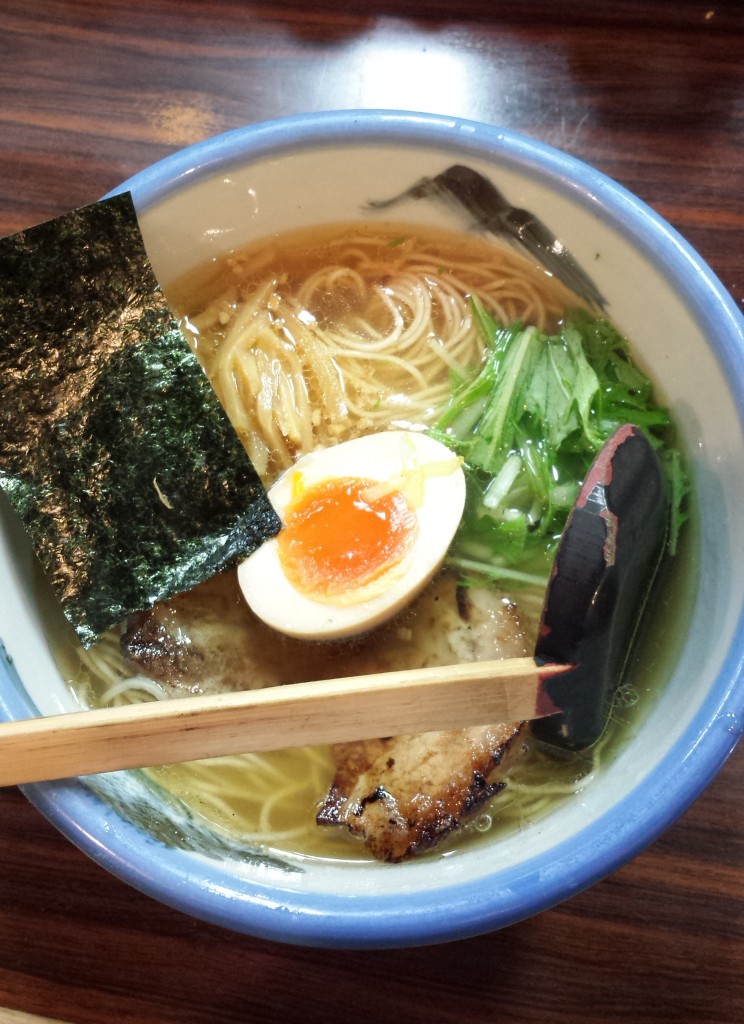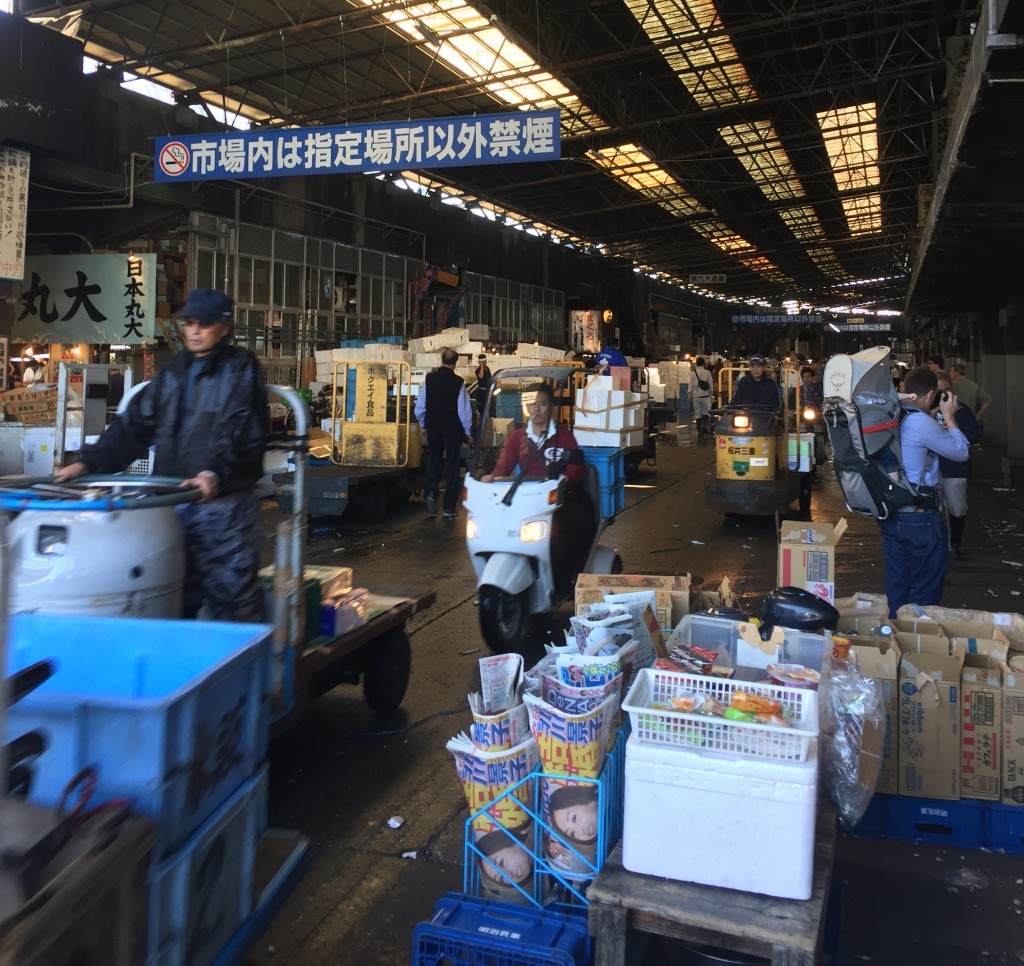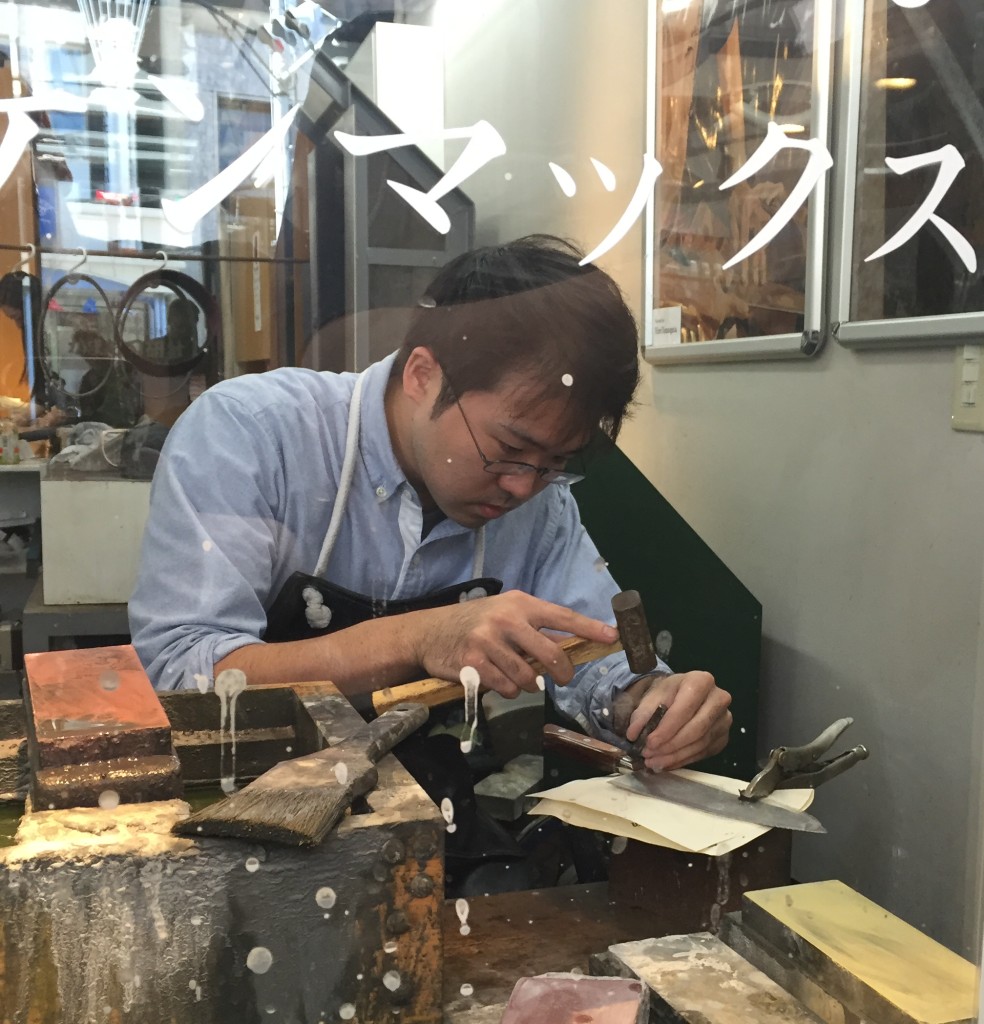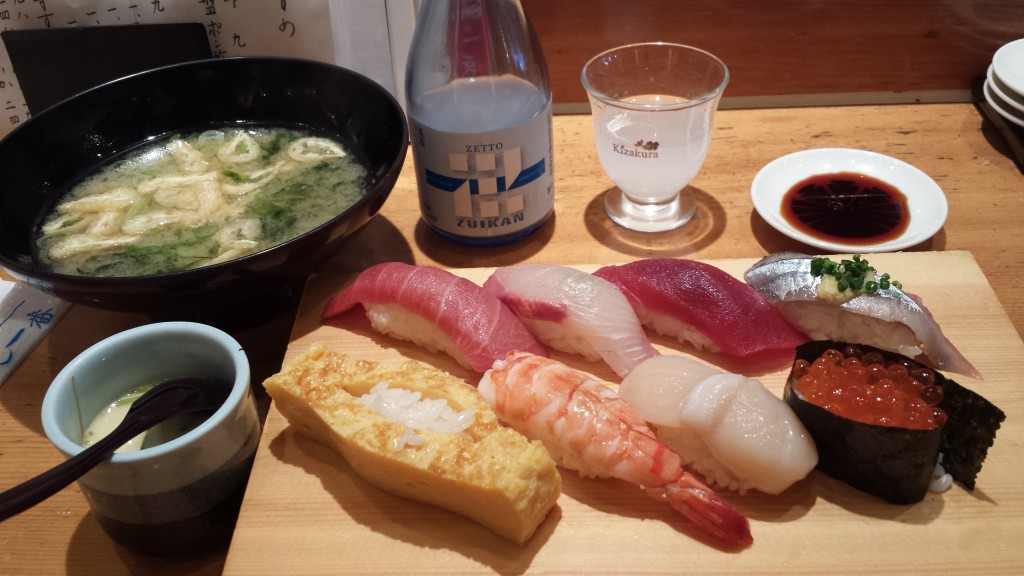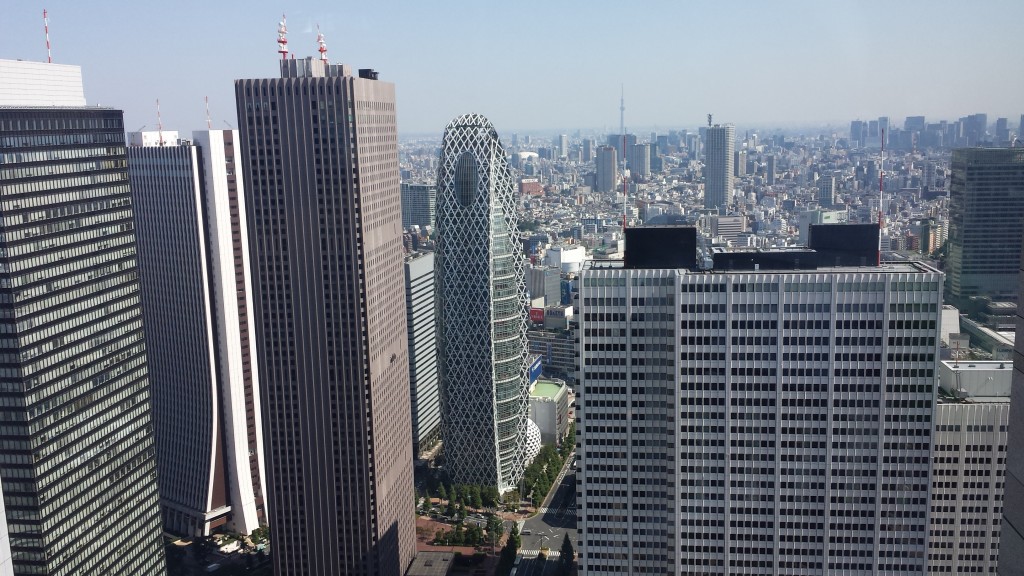36 Hours in Tokyo
J and I were able to get away by ourselves last week, just the two of us. Miss E was out of town on a school trip, so we found ourselves with a couple of days to do whatever we wanted. Rather than spending it relaxing at home, we decided to hop on the Shinkansen (aka the bullet train) and spend that time in Tokyo! We ended up having only 36 hours in Tokyo, but we were up for the challenge.
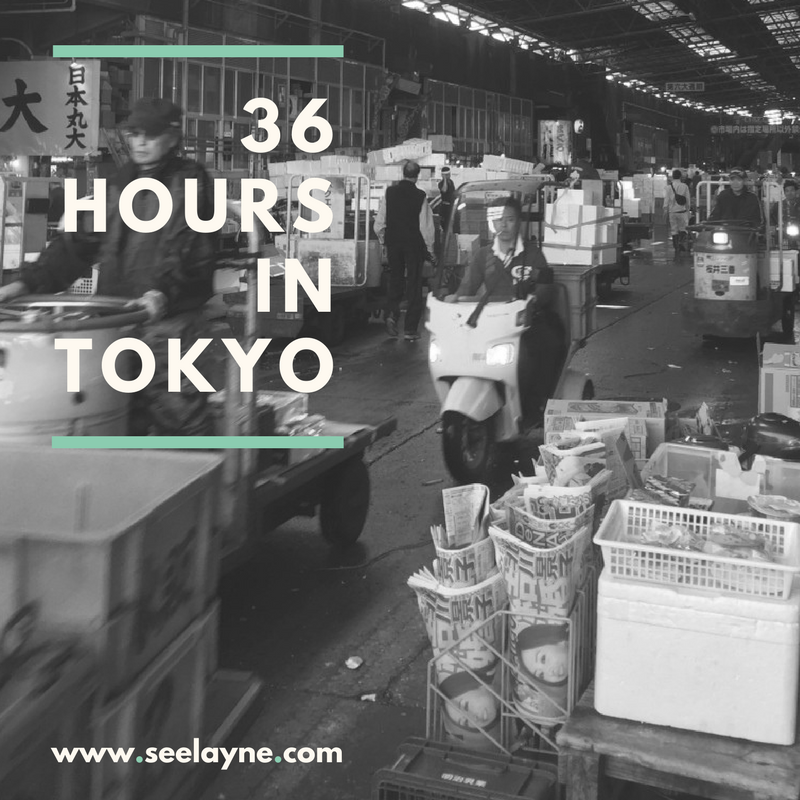
Returning to Tokyo
This wasn’t the first time I had been to Tokyo. We actually stayed in Tokyo on the day arrived in Japan, before traveling on to Nagoya. I don’t know that I really count that as a “visit to Tokyo” because we were kind of a mess and weren’t in any condition to experience the city.
We landed late in the afternoon, took a train from the airport to Tokyo station, and then took a taxi from there to our hotel. If it had been up to us girls, we would have called it a night and face planted into our beds. But since that’s the #1 worst thing you can do when attempting to combat jet lag, J dragged us we ventured out. And we were cranky, hungry and on sensory overload. So much so that after a mini-meltdown (I’m not going to say whose meltdown it was), we ended up eating dinner —our very first meal in Japan—at….McDonald’s. Yep. Judge away.
My second time in-Tokyo-but-really-not was this summer when Miss E and I took a last-minute trip to Tokyo Disneyland and Tokyo DisneySea. It was a last-minute trip: I happened to check the crowd calendar one day in June only to find that later that week would be the only (yes, the ONLY) week during the summer that the crowd levels would be under 50% capacity – and so off we went. And it was an awesome girls trip! But since we didn’t actually make it into the city, I don’t really count that as a trip to Tokyo.
So, third time’s a charm, yes?
Because we had already been to Tokyo before, there are some pretty obvious stops missing from this itinerary. We did not visit Shibuya Crossing, the Tokyo Sky Tree, Tokyo Tower, Sensō-ji Temple, just to name a few. I will cover those in future posts, but if you are trying to plan your first trip to Tokyo, those definitely need to be on your list.
Tokyo Trip: Day 1
We took off last Wednesday afternoon, and after a quick 90 minute trip on the Shinkansen we made it to the city. We made our way to our hotel, dropped off our bags, and headed out to dinner.
Ramen at Afuri
We made up for our first meal in Japan by visiting a nearby ramen restaurant, Afuri. We were able to sit right down at the counter after purchasing our meal via the vending machine located right inside the restaurant’s entrance.
The ramen was so different from ramen varieties we had previously tried. The chicken, fish and seaweed-based broth was served with pork, seaweed, an egg, and yuzu (a type of citrus fruit) peel, which sounds a little strange but ended up being delicious.
As we sat at the counter slurping our noodles, the restaurant filled up, making us glad that we got there when we did! There was a line about 7 people deep when we left — a pretty good indicator of a great restaurant in Japan. We would definitely go back again.
Tokyo Trip: Day 2
Since we really only had one full day to spend in Tokyo, we wanted to pack as much activity in as we could on Thursday. Our plan was to do a few of the super touristy things (especially the things Miss E probably wouldn’t enjoy) so that we won’t feel need to do them the next time we visit:
Tsukiji Fish Market
Tsukiji market is one of the largest markets in the world. It is a wholesale market; whole fish and other goods are bought at auction in the early morning hours and are then cut up and packaged to be sold to restaurants, catering companies, and the public afterward.
Each morning, a small number of tourists are allowed to witness the tuna auction, which happens to be the most famous. Reservations are not available in advance; If you want to witness it you need to wait in line and hope you’re one of the first 120 people there. Each group is taken to see the tuna auction for about 25 minutes. We decided to forego the tuna auction on this trip because we didn’t want to be up at 3:00 AM for the 25 minute experience.
Even though we missed the earlier auction, the market itself was quite an adrenaline rush! Everyone is buzzing around, the energy palpable. You can both hear and feel the the motorized vehicles as they sped by. It is important to listen for the sound of a vehicle backing up in case you happen to be in the exact spot it needs to be in. Don’t forget that there are actually people working and shopping at the market — not just gawking at the scene. You have to constantly watch where you step, because there are puddles of water and…other stuff…everywhere.
We were most definitely in the way no matter where we walked or stood, and I couldn’t help but think about how annoying it must be for the people trying to do their work and shopping with all of us clueless tourists in the way.
Kappabashi Street
One of the items on my Japan bucket list is to invest in Japanese knives. I did some research before we left and found that the best place to find a knife in Tokyo is Kappabashi Street.
Kappabashi Street, or Kitchen Town, is an area in Tokyo where you can find any type of restaurant or home kitchen equipment: dishes, cookware, display cases, uniforms, the plastic food you see outside of every restaurant in Japan, and so much more. We walked up and down the street, ducking into a store here and there. But I was on a mission to find a knife so we didn’t spend too much time browsing.
Kamata Knife Shop
I ended up buying my knife at a store called Kamata. The store was packed with shoppers when we arrived. The woman who helped me choose my knife was very attentive and patient while I went back and forth trying to choose. She was able to give good suggestions in my price range, and she spoke near-perfect English. I probably held about 10 knives before finding the right one.
I ended up choosing a santoku knife, which is a Japanese-style, all-purpose knife that is most often used in home kitchens. It is made from Damascus steel with a polished wood handle. And it’s gorgeous. After I made my decision and paid for my new knife, they engraved my name — in Japanese — on the handle.
Sushi Lunch
For lunch we stopped in a random sushi restaurant. We had grand plans to have a sushi breakfast while we were at Tsukiji market earlier, but we weren’t hungry and the lines were pretty insane. The good news is that even a random sushi place in Tokyo is pretty awesome. We each got a sushi set and split a small bottle of sake.
Harajuku
After lunch, we did some more exploring. We ended up in Harajuku, and decided to take an afternoon break at Double Tall Cafe. The coffee I had was perfect. I haven’t found great coffee in Nagoya yet, so it tasted especially great. The cafe also had outdoor seating on the second level overlooking the main street, which was perfect for people watching. While we didn’t see any stereotypical Harajuku girls (worth a Google), we did see some pretty great fashion. Miss E would have been in her element for sure. I can’t wait to take her back to check it out!
Yoyogi Park
After our afternoon dose of caffeine, we walked over to Yoyogi Park. It wasn’t very busy since it was a weekday afternoon, but there were some people out and about. Yoyogi park is known for attracting some interesting characters. It’s a great place to sit and do some people watching. We watched a bartender practicing his tricks and a group of kids rehearsing a dance routine. It was a beautiful fall day, perfect for enjoying some green space in the middle of the city.
After that we were ready to stop back at the hotel to unload our purchases and freshen up a bit. All of our exploring had worn us out…and we were starving!
Yakiniku Dinner
We headed out on foot to find some dinner. Armed with a recommendation and a map from our hotel, we went in search of a yakiniku restaurant. Yakiniku is a Japanese word for the style of cooking small pieces of meat and vegetables on a tabletop, often charcoal, grill. I hadn’t tried it before, and it was actually pretty fun!
Our dinner was delicious, especially the beef. Besides some chicken, pork, and vegetables, we also ordered a set plate with various cuts of wagyu beef. The beef was a splurge, but it was worth it. We left full and happy.
Tokyo Trip: Day 3
The next morning we slept in and ate breakfast at our hotel. Since we had been so busy the day before, we took our time checking out and getting to the train station. We found a storage locker for our bags and then bought our tickets for our afternoon train before venturing out again. We didn’t have much time, but we wanted to fit at least one more attraction before leaving Tokyo.
Tokyo Metropolitan Government Building
The TMGB has free observation decks that give you a view of Tokyo (and beyond) from 45 stories up. It really is incredible to see just how enormous the city really is. I mean, it’s pretty obvious when it takes a 30 minute ride on the subway to get from one part of the city to another, but to actually see it from so high up is really, really cool.
I’m sure the view isn’t as great as the Tokyo Sky Tree, but we decided to save that for the next trip. We only ended up with one non-blurry picture from up there, but you can still get an idea of the size of the city. You can also see the Tokyo Sky Tree in the distance.
Burgers for Lunch
We only had about two hours left until we needed to get on our train and head home, so we went on a mission to find some lunch.
We headed back towards Harajuku to hunt down a burger place that seemed to get great reviews online. Sadly, the burgers ended up being pretty disappointing. I don’t think we realized how spoiled we were while we were living in Texas, and apparently we have become pretty picky when it comes to burgers.
In our experience, the beef that they use for burgers here in Japan just isn’t great. And adding interesting toppings it doesn’t change the quality of the burger much. It only took us six months of trying to hunt down a great burger in Japan to figure out that it’s just not worth it to us. Lesson learned. Another thing to add to the list for when we’re back in the US!
Heading Home
After lunch, we started back to the station to catch the Shinkansen. Less than two hours later we were walking in our apartment door, about 20 minutes before Miss E got home. Perfect timing!
And as great as it was to get away, it’s even better to come home! I’m glad we were able to spend a couple of days enjoying Tokyo, but spending so little time there makes me just want to go back!

